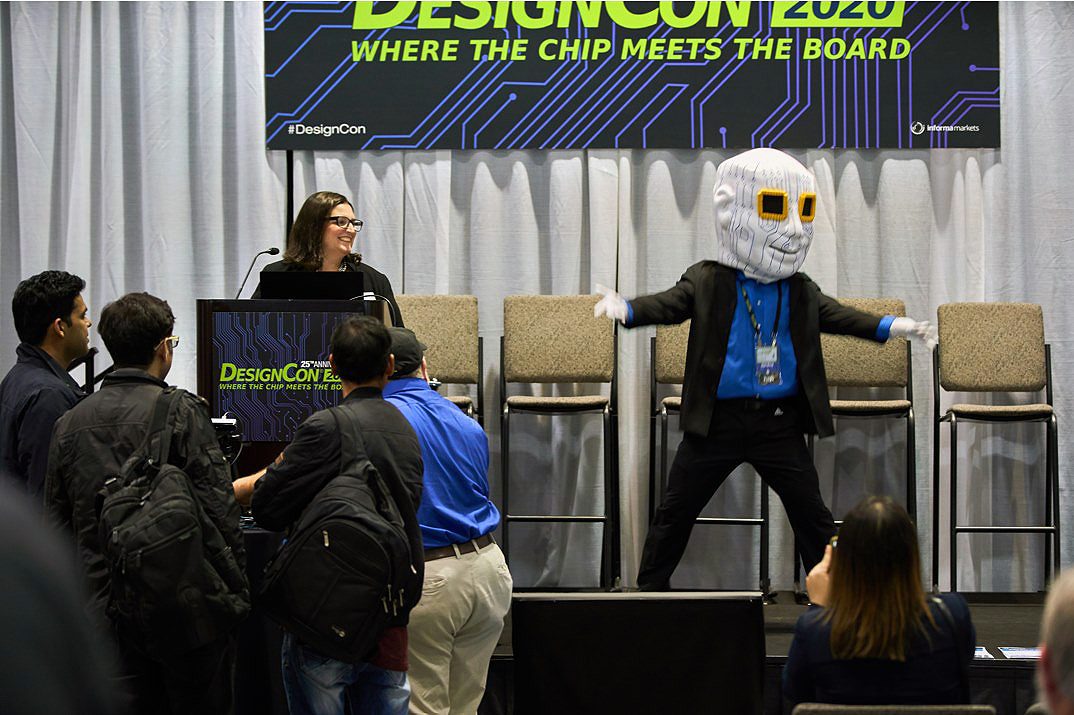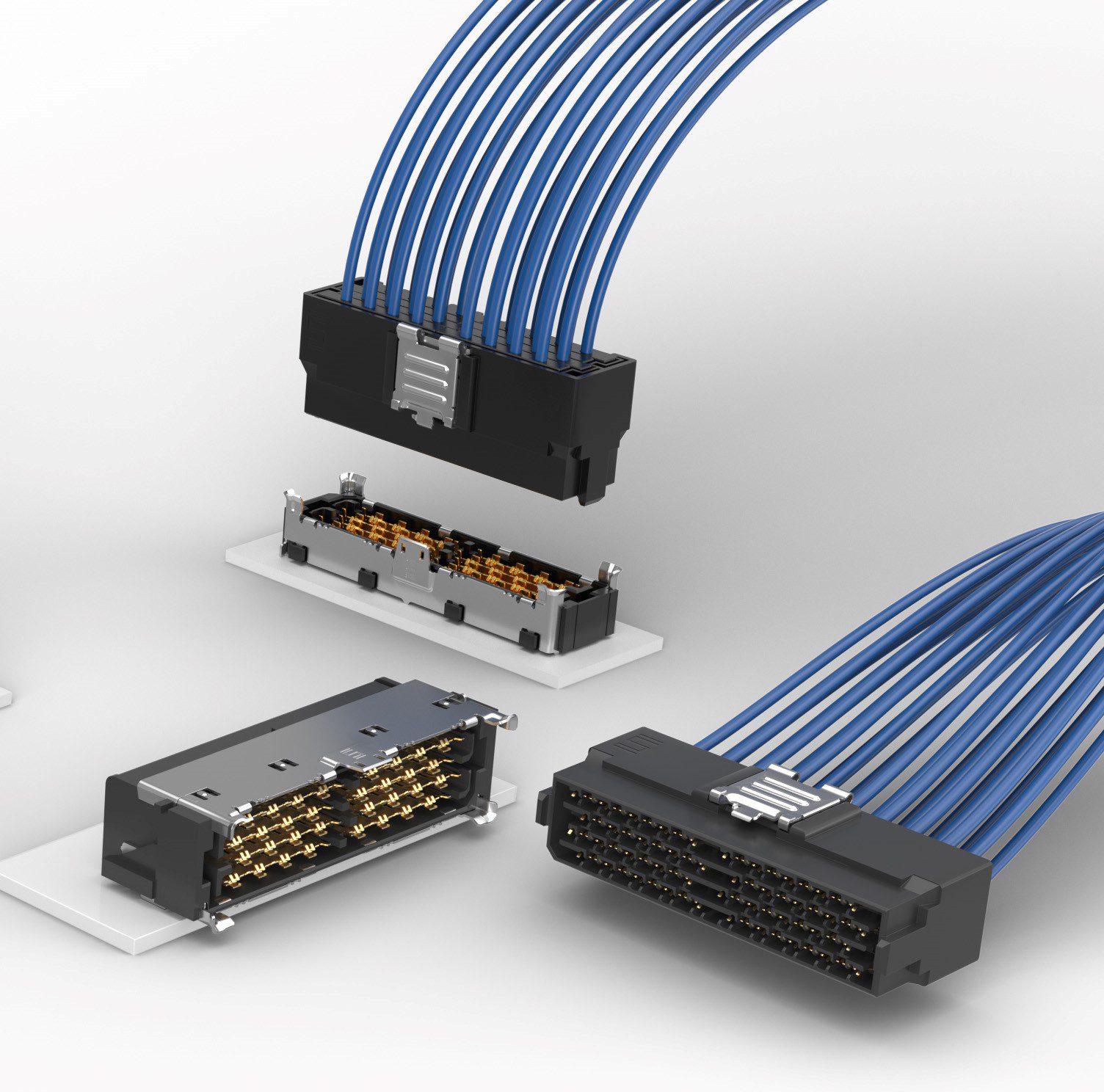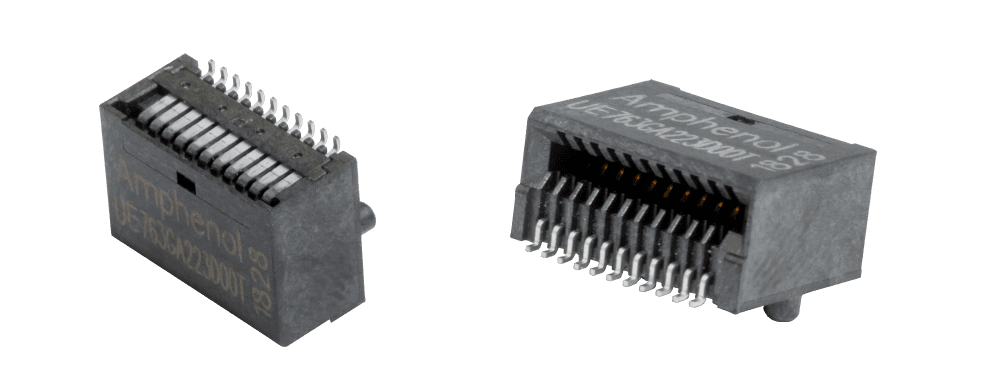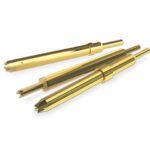Smaller DesignCon 2021 Still Worthwhile
The rescheduled, relocated DesignCon was heavily impacted by the ongoing pandemic. However, high-speed innovation appears to be unstoppable. Bob Hult shares his observations on the 26th annual event and new connector products introduced.
DesignCon 2021 was unlike any of the previous 25 years’ events. The continuing prevalence of COVID-19 resulted in the rescheduling of the conference from its traditional late-January dates to August 16-18. The event also relocated from the traditional setting at the Santa Clara Convention Center to the cavernous McEnery Convention Center in downtown San Jose.

DesignCon 2021 Abbreviated Due to COVID-19
The delta variant and resulting travel restrictions abbreviated the number of exhibitors, as well as registered attendees. All participants were required to wear masks, somewhat inhibiting face-to-face discussion. While DesignCon 2020 featured 180 exhibitors, the 2021 conference dropped to approximately half that number. Among the global broad product line connector manufacturers, only Amphenol and Samtec participated with a booth. TE Connectivity’s presence consisted of participation in two technical sessions. Molex chose to opt out this year.
The exhibitors present included multiple precision coax and fiber optic connector, flex circuit, test equipment, micro miniature component, circuit design, and cable assembly suppliers. Exhibitor representatives reported sharply reduced but high-quality traffic.

Even Chiphead, the show mascot, made his appearance only in the form of a cardboard sign.
A primary attraction of DesignCon has been the technical program, which typically includes keynote addresses, technical papers, panel discussions, tutorials, and boot camps. This year, the 150+ sessions organized over 14 tracks were relevant to next-generation chip and board designers, and were generally well attended, although the rooms were smaller, with seats spaced six feet apart. Topics included design and test of 112 Gb/s channels, next-generation 224+ Gb/s channels, signal/power integrity, designing for PCIe 6.0, optimization of bit error rates, and principals of EMI/ESD control. The advantages and challenges of co-packaged optics was a topic of interest to many attendees, as well as the modeling and simulation of high-speed channels.
PAM4 modulation has become ubiquitous in the design of both copper and fiber optic channels but may not be the best choice for 224+ Gb/s channels being considered in next-generation applications. PAM6 has become a contender, although reduced noise margins and sensitivity to jitter will be a challenge. Fiber is considered the likely media for 224+ Gb/s I/O channels, but very short copper internal and chip-to-chip links are being studied. OIF (the Optical Internetworking Forum) has begun investigating a common electrical interface (CEI) standard for 224+ Gb/s copper links. At these speeds, insertion loss analysis must be augmented with a rigorous application of Channel Operating Margin (COM) analysis. Circuit designers must balance the factors of reach, bandwidth, acceptable bit error rate, latency, power consumption, degree of error correction required signal density, manufacturability, and cost to select the best channel media and connector.
A Limited Number of New Connector Products Introduced

TE Connectivity’s presentation included its STRADA Whisper High Speed Backplane Connectors and Octal Small Form Pluggable (OSFP) Connectors and Cable Assemblies.
The evolving crop of traditional copper backplane connectors can support current demand for 56 Gb/s interfaces, with design headroom to 112 Gb/s. Connector suppliers, including Amphenol, Molex, and TE Connectivity, continue to make incremental improvements in their flagship backplane families. These connectors, designed specifically for differential pair channels, utilize 360° shields around each pair to improve crosstalk and insertion loss. Amphenol TCS has upgraded its Paladin backplane connector into four configurations, including the standard version, a high-density HD version that can pack 144 differential pairs operating at 112 Gb/s into a 1U slot. The Paladin Plus offers lower noise with tighter impedance control, while the Paladin RPO (reduced profile option) reduces the height of the connector above the PCB, reducing obstruction to airflow. At last year’s DesignCon, TE Connectivity announced its latest iteration of the STRADA Whisper family, the STRADA Whisper Absolute backplane connector designed for 112 Gb/s PAM4 applications. The Absolute is backward compatible with the existing 56 Gb/s STRADA Whisper interface.
As speeds continue increase beyond 112 Gb/s, the effective length of the signal path through even the highest performance PCB material will become extremely limited. Leading connector suppliers anticipate that cable backplanes may become the only viable architecture in high-speed computing applications and are developing discrete and ribbonized twinax cable solutions that address cable management, field repair, and cost challenges.

SAMTEC demonstrated a complete cable backplane to internal PCB concept using the company’s NOVARAY I/O connector and cables operating at 112 Gb/s PAM4 with a total channel length of 3.5 meters.
Only a select number of high-speed channels will likely be conveyed via twinax cable through the backplane and connect with an internal cable that can be terminated immediately adjacent to a SerDes, ASIC, or switch. Low-speed signals and power will be distributed on the backplane.
 Foxconn Interconnect Technology (FIT) introduced the FPIO high-speed PCB to cable connector that is designed to support PCIe 5/6, and up to 112 Gb/s PAM4 signaling.
Foxconn Interconnect Technology (FIT) introduced the FPIO high-speed PCB to cable connector that is designed to support PCIe 5/6, and up to 112 Gb/s PAM4 signaling.

Another Samtec demonstration consisted of a 1.7-meter channel using NOVARAY and precision coaxial connectors to approximate an internal Flyover® concept. SAMTEC published a NOVARAY performance roadmap to 224+ Gb/s.
The Samtec booth also included an innovative display of flexible waveguide cable technology operating at 60 GHz.
New Connector Products Introduced to Reduce Power Consumption
Reduction of power consumption at every level of the system has become a critical issue, as the rate of power increases are on an unsustainable curve. The measure of Picojoule-per-bit is becoming a key measure of copper and fiber optic channel design.
The extensive Amphenol booth featured cables and pluggable I/O connectors that span the performance range of 100, 200, 400G QSFP, 200, 400, and 800G OSFP, and 200, 400 and 800G QSFP-DD interfaces.

Amphenol ICC also showed the new DSFP 22-pin connector that enables the doubling of data rate and port density of SFP modules with aggregated data rates of up to 100 Gb/s.
Multiple exhibitors showcased their lines of pluggable copper and fiber optic connectors. The Amphenol and Samtec booths, as well as Luxshare ICT, Leoni, and FIT, demonstrated a variety of 112 G OSFP and QSFP-DD cable assemblies, pluggable modules, and PCB cage assemblies.
Optical connector manufacturers were represented by SENKO, displaying its SN-MT connector, and US Conec, with its MMC and MDC high-density connectors.
Given the reduced number of participating vendors, introduction of new interconnect products was relatively limited.
DesignCon is tentatively scheduled to return to the Santa Clara Convention Center April 5-7, 2022. We can only hope that the pandemic will have become a distant bad memory and the free exchange of information among all connector industry leaders will resume.
Like this article? Check out our other Trade Show and new technology articles, our Datacom/Telecom and Wire/Cable Assembly Market Pages, and our 2021 Article Archive.
- Optics Outpace Copper at OFC 2024 - April 16, 2024
- Digital Lighting Enhances your Theatrical Experience - March 5, 2024
- DesignCon 2024 in Review - February 13, 2024





